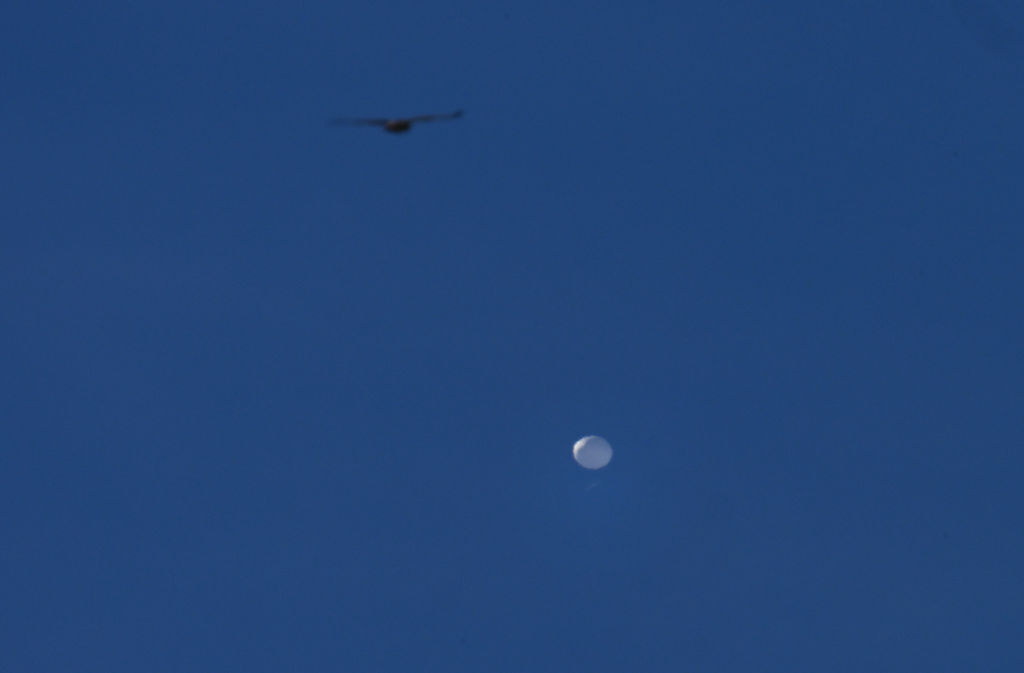Since the earliest days of the Cold War, the U.S. military has been monitoring the skies over North America, ever-vigilant for a sneak attack. The task falls to U.S. Northern Command and the North American Aerospace Defense Command (NORAD) to identify and track potential threats before they even cross into our airspace—be they Russian bombers or possible North Korean ballistic missiles. So how did it miss at least four Chinese balloons that had entered U.S. airspace in recent years, including near Texas, Florida, and Hawaii?
General Glen VanHerck, NORAD’s commander, admitted that the balloons exposed a “gap” in American air defenses. “I will tell you that we did not detect those threats,” he said.
The Pentagon has not released many details of other other balloons, but the one that was spotted over Montana on Feb. 1 was 200 feet tall and carried a payload of sensors and other equipment comparable to a small passenger jet. That balloon sparked a crisis after it lingered near sensitive U.S. nuclear missile sights before wafting over the middle of the continental U.S. and drifting out to sea off of South Carolina, where it was shot down by an Air Force F-22 stealth fighter jet.
While the U.S. is still working to determine how and why previous balloons escaped detection, experts say it may partly have to do with difficulties picking up inflatable airships on existing radar. And it could take deploying new technology and new strategies to make sure future balloons are spotted. “We don’t as a country have persistent sensors that can detect low profile and low heat signatures on our borders,” Riki M. Ellison, chairman & founder of Missile Defense Advocacy Alliance, says “It’s a needle in a haystack.”
Reports Friday that the U.S. military had downed an “unidentified object” near Alaska suggest that American skywatchers may already be adapting to the new challenge.

The Pentagon says the balloons are part of a Chinese surveillance program that has gone on for years and spanned the globe. The balloon that was recovered allegedly contained sensitive equipment that could be used to listen to Americans’ communications and pinpoint the location of those talking on the ground. Officials said they first spotted that one over Alaska, but a retroactive review picked up the other incursions, as well as evidence that balloons had floated over most regions of the Earth in recent years—including Southeast Asia, South and Central America, and Europe.
China has dismissed allegations of espionage—instead claiming that the balloons are civilian craft for research; many experts have said this is unlikely as the airship does not look like a weather balloon.
The U.S. has spent decades investing billions of dollars into radar installations, satellite constellations, and other globe-spanning systems with the goal of detecting airborne threats. American airspace is monitored for fast-moving threats like missiles and planes primarily via radar. The technology works by sending out radio waves from antennae and listening for the waves to bounce back off an object. Based on the time it takes to return, an object’s speed, location and altitude can be determined. “You would think intuitively that you have this big round target that should be lighting up the radar like crazy but because of the nature of radar… that radiation can’t pass through certain materials means that this may not be the case,” says Ian Williams, deputy director of CSIS’s Missile Defense Project.
Another issue is the temperature of the balloon itself. Missiles and aircraft are traveling at blistering speeds, so give off tremendous amounts of heat that can be detected at long-ranges. Not so, with slow-moving balloons in the stratosphere, Williams says. “They are not warm, typically. They kind of assume the temperature of the surrounding air for the most part; they don’t have an engine burning or anything like that,” he says. And at 60,000 feet—the altitude of the balloon the U.S. downed—the air is 70 degrees below zero Fahrenheit.
If anything, the payload that the balloon is carrying may have a better chance of showing up, Williams says. Officials said they believe the balloon was equipped with large solar panels. But those objects can often be much smaller than the balloon itself, says Ellison.
Much of U.S. military spending is focused disproportionately on offense instead of defense, says Ellison, whose group advocates for spending more money on radars and interceptors designed to defend American airspace. “It’s about spending money the right way… it’s the Department of Offense over there; the American public has got to be protected.”
One possible solution is for America to launch a fleet of its own unmanned balloons that would float off American coastlines equipped with sensors that could spot other incoming threats, Ellison says. These kinds of warning systems were used in Afghanistan to watch for enemy attacks and are now used on the Southern border to spot drug traffickers.
Another way to improve air defense would be to centralize information from radar systems in the country, Williams says. Information from civilian system like the Federal Aviation Administration and National Oceanic and Atmospheric Administration does not automatically feed into military applications, he notes.
That raw data could be useful for the military to filter and look for threats. “So we have all of these untapped reservoirs of airspace, situational awareness that we’re kind of leaving fallow,” Williams says.
More Must-Reads From TIME
- The 100 Most Influential People of 2024
- The Revolution of Yulia Navalnaya
- 6 Compliments That Land Every Time
- What's the Deal With the Bitcoin Halving?
- If You're Dating Right Now , You're Brave: Column
- The AI That Could Heal a Divided Internet
- Fallout Is a Brilliant Model for the Future of Video Game Adaptations
- Want Weekly Recs on What to Watch, Read, and More? Sign Up for Worth Your Time
Write to Sanya Mansoor at sanya.mansoor@time.com